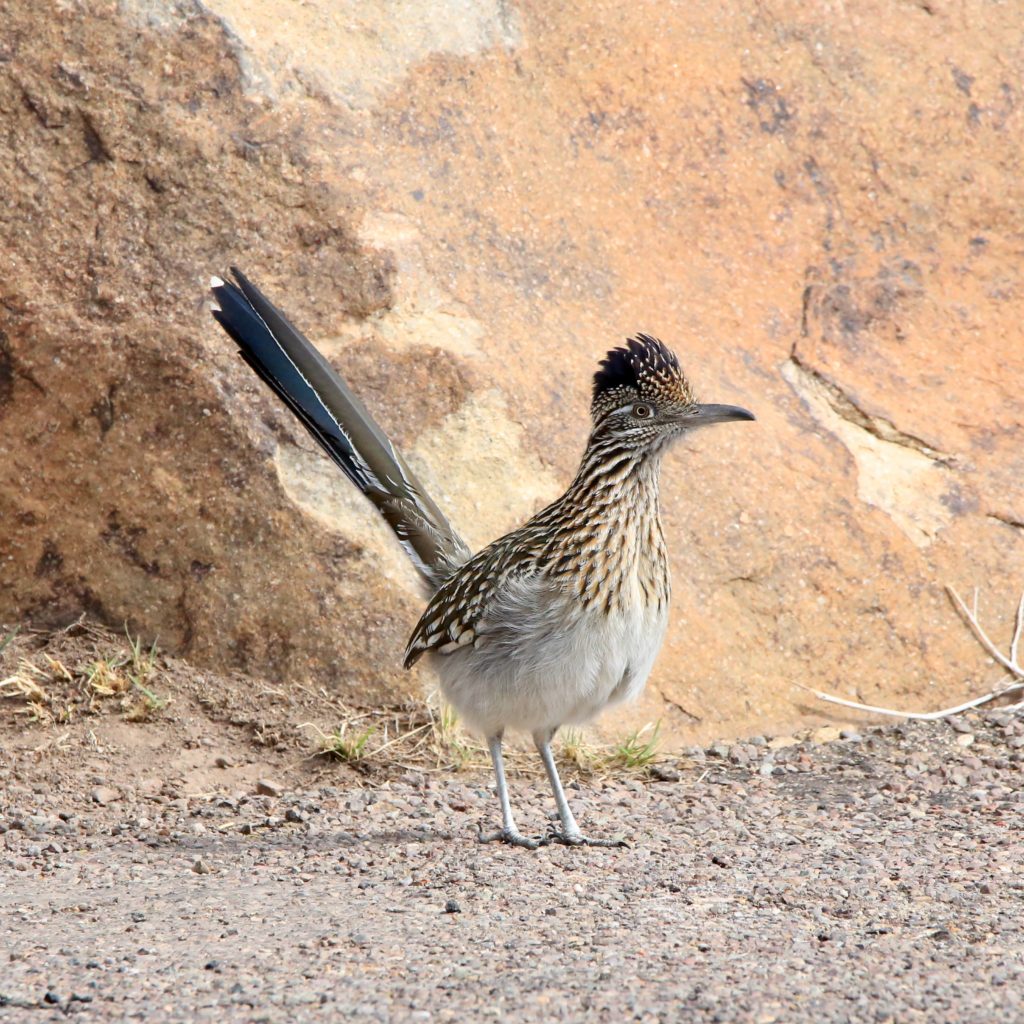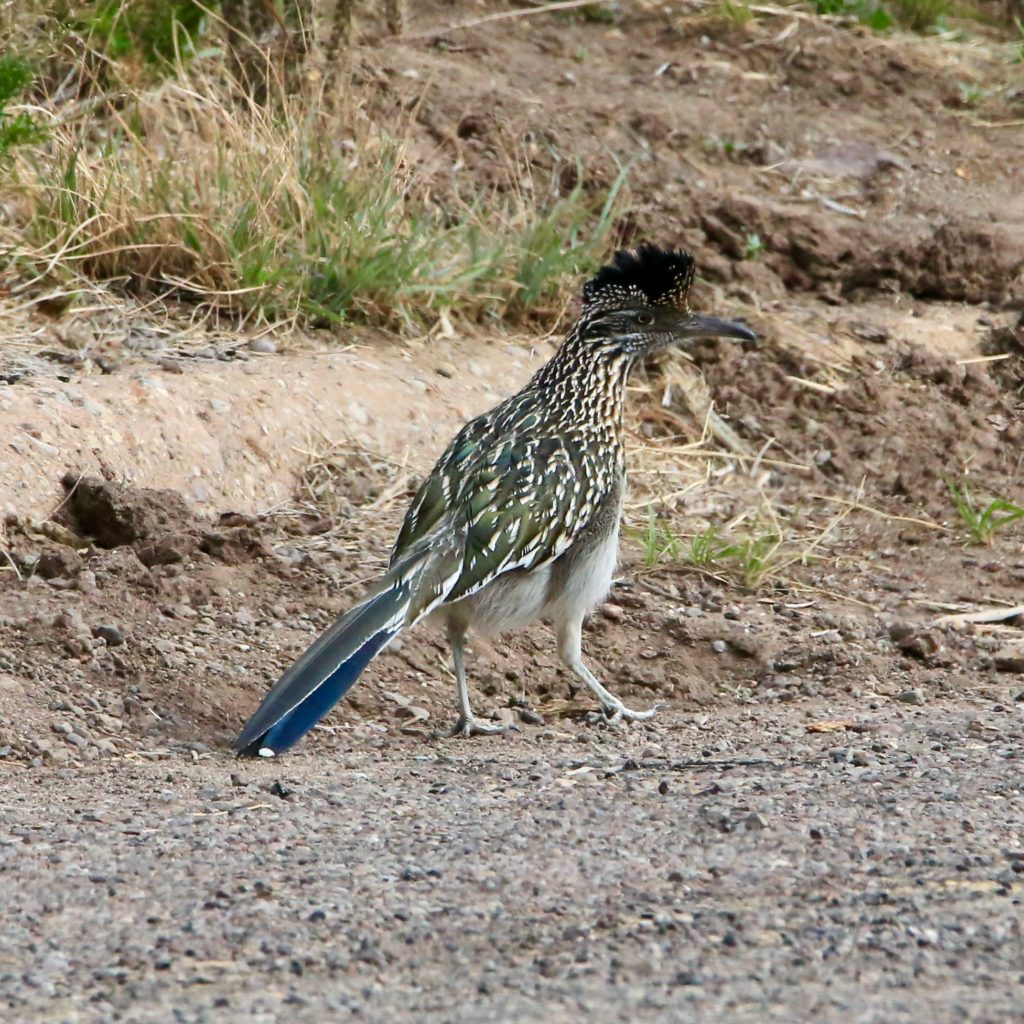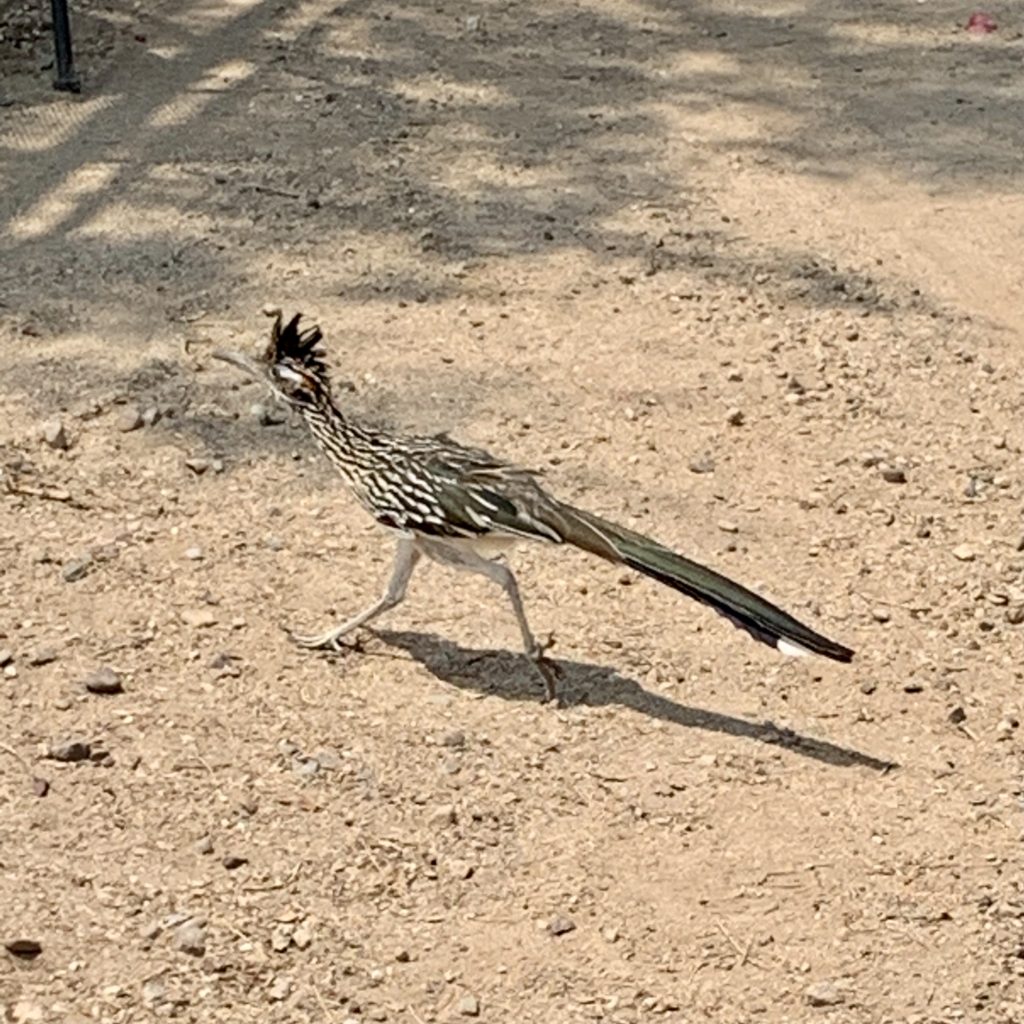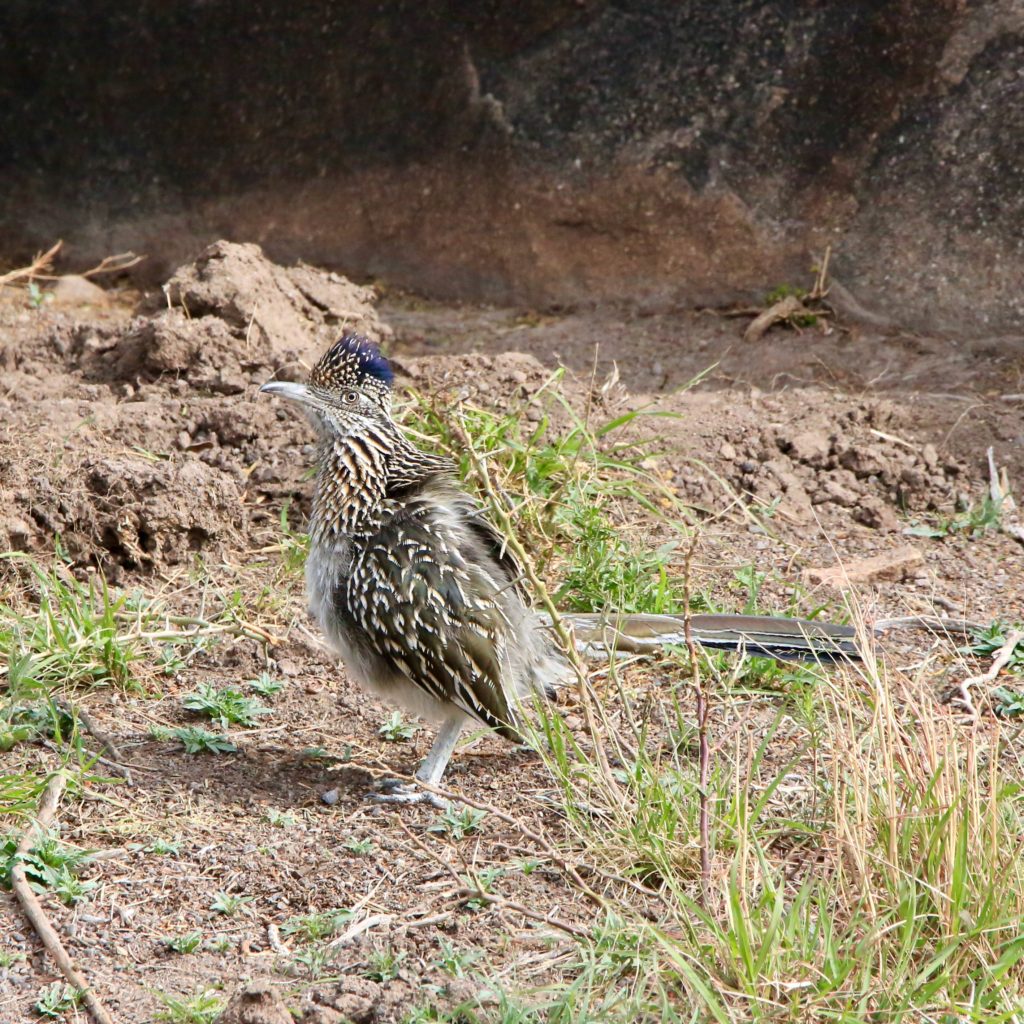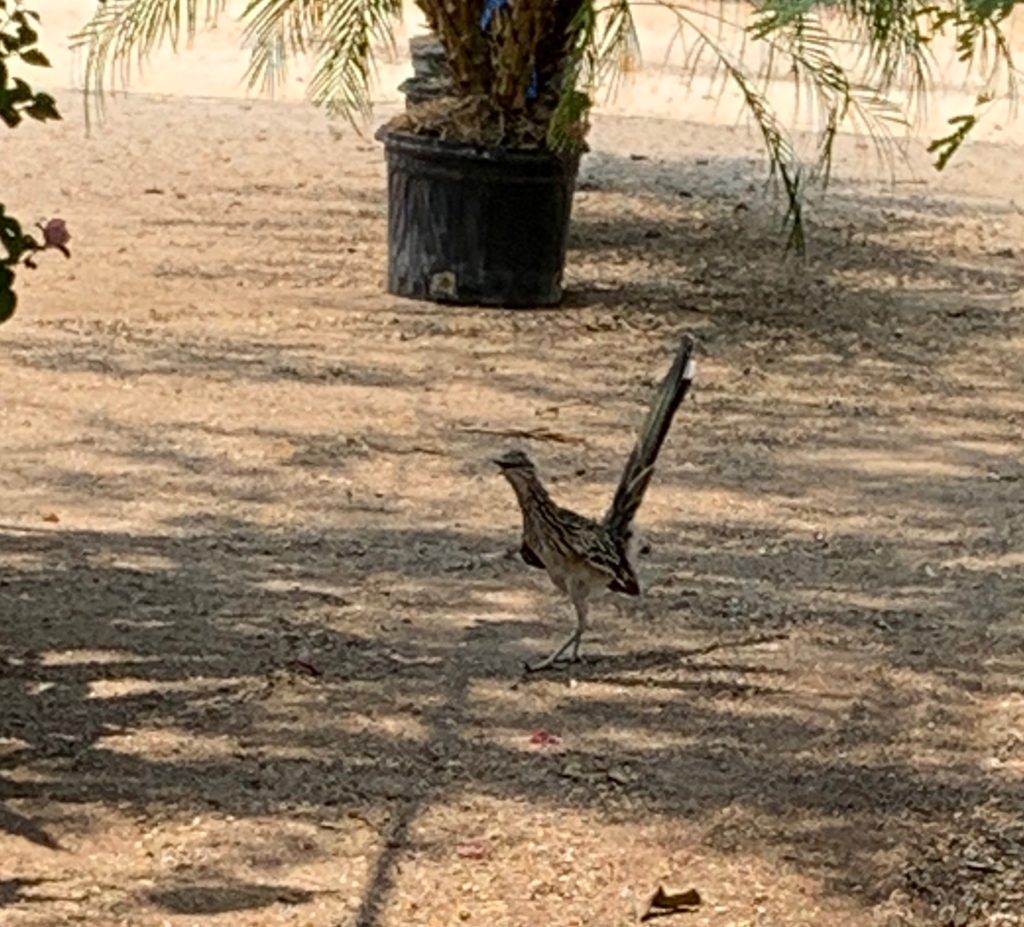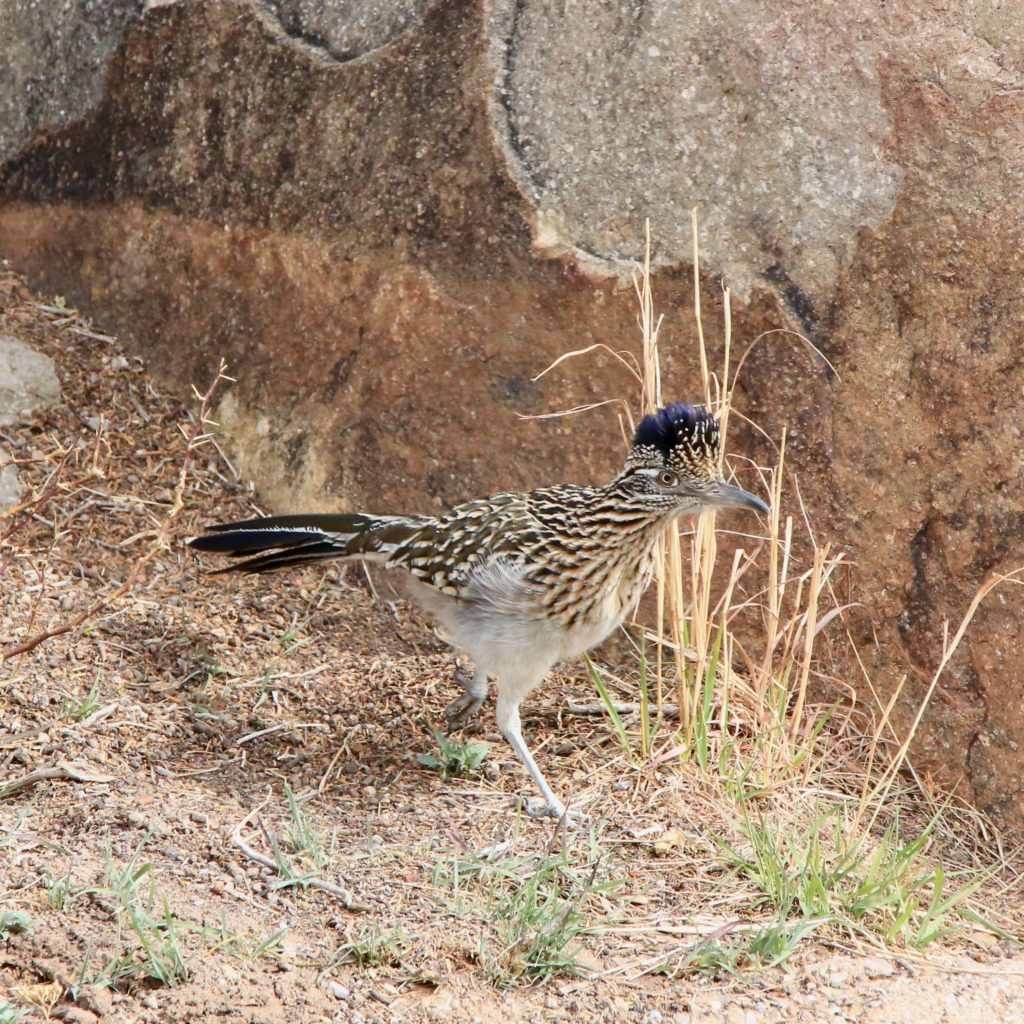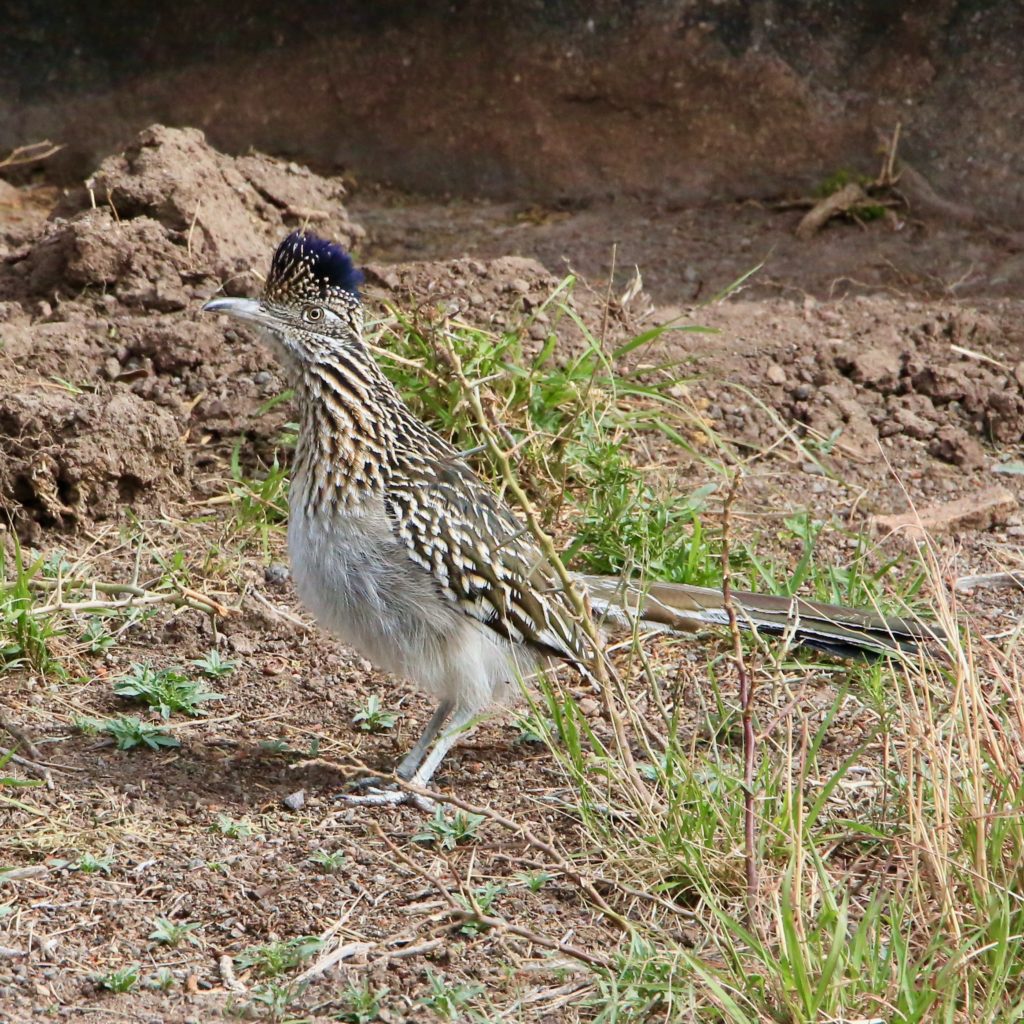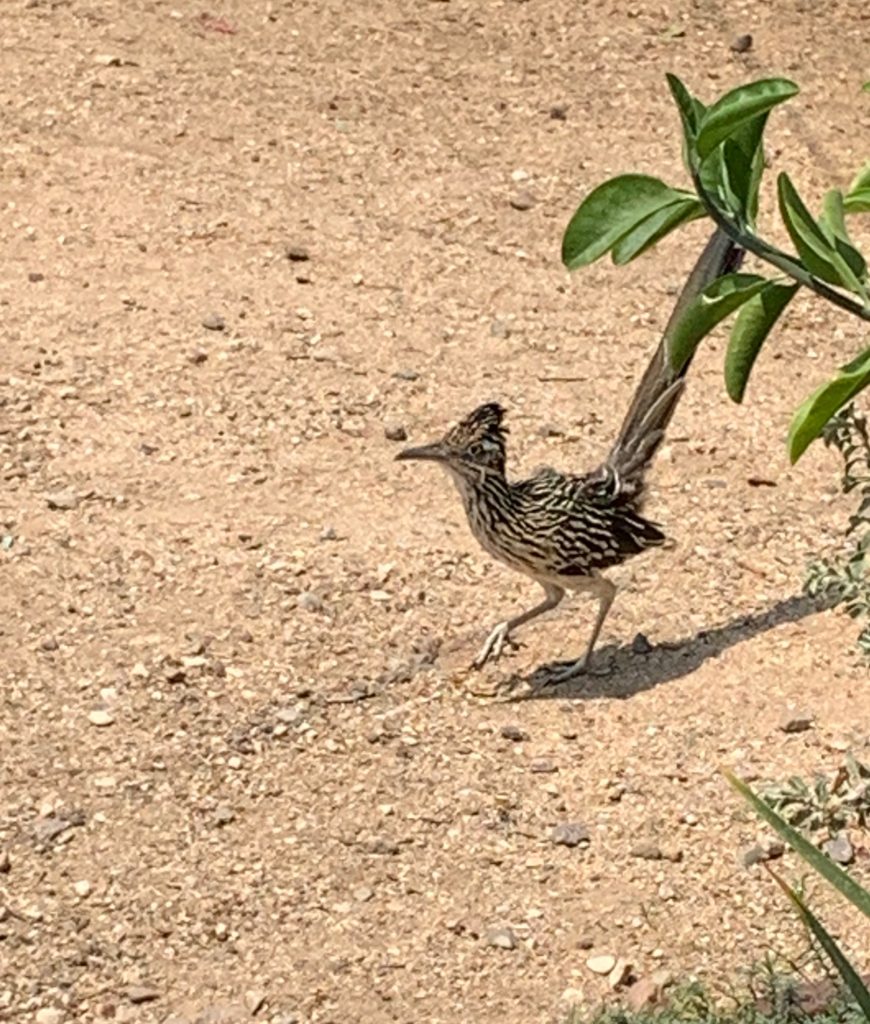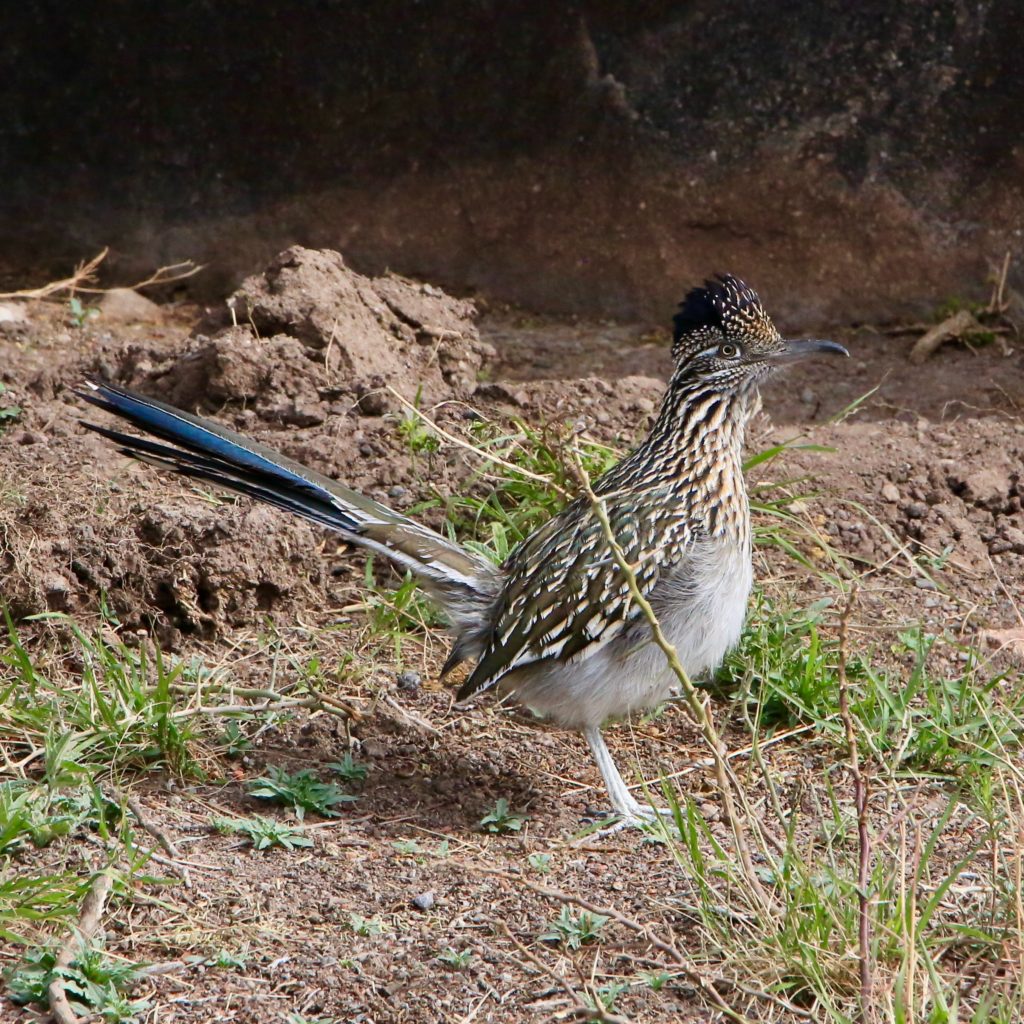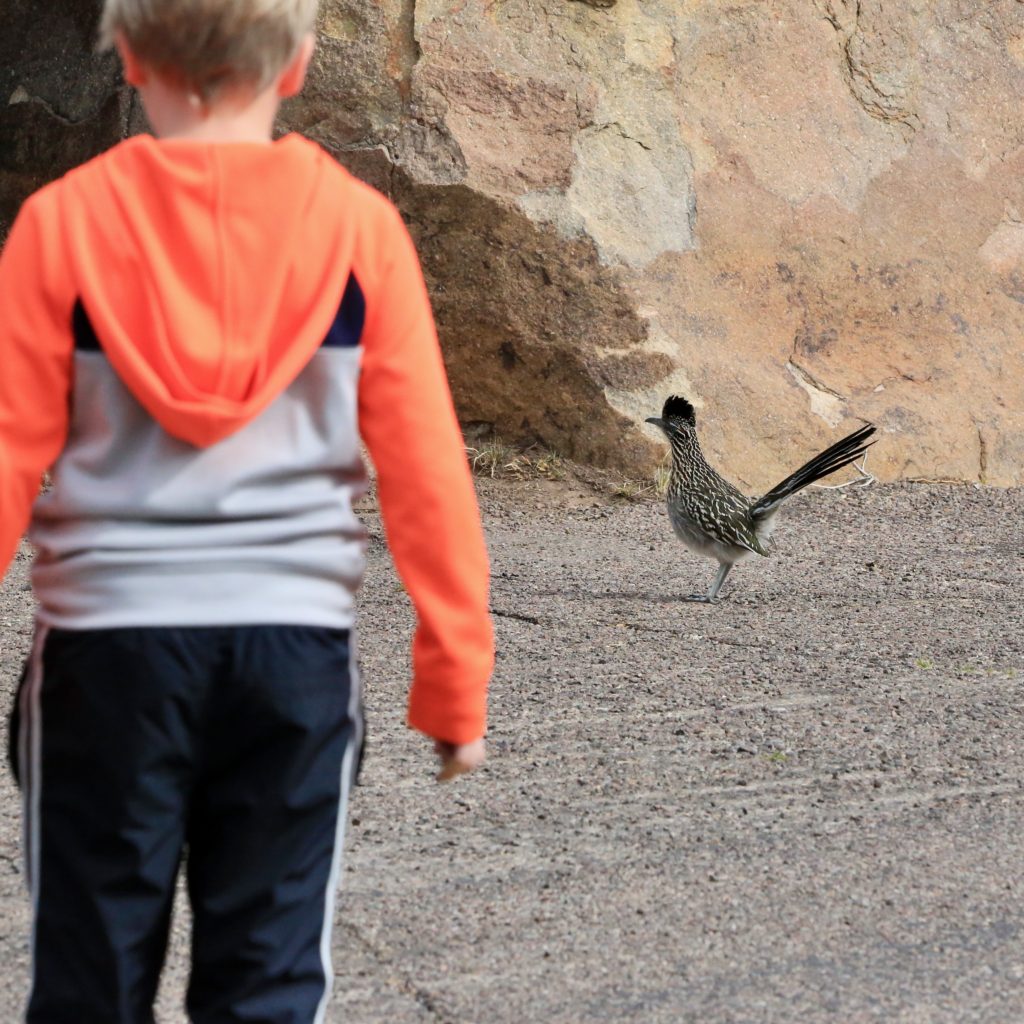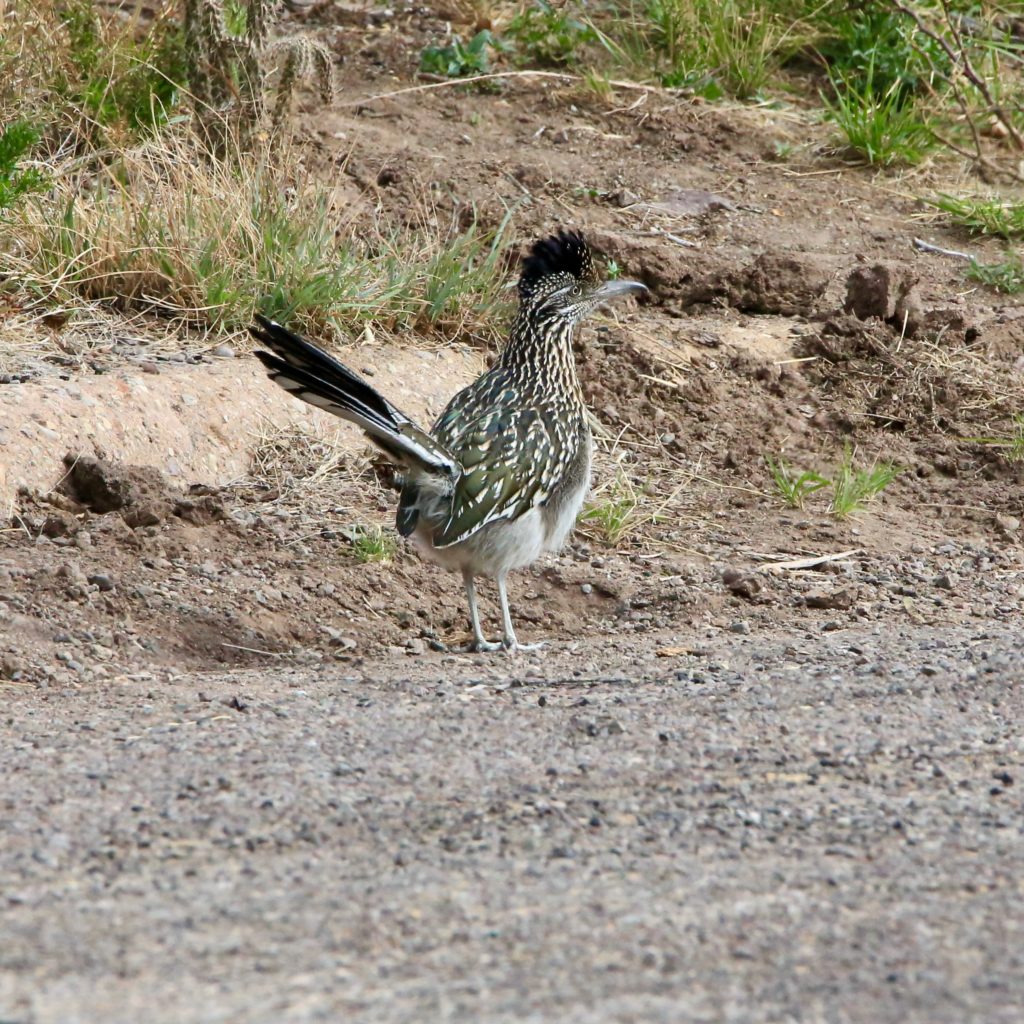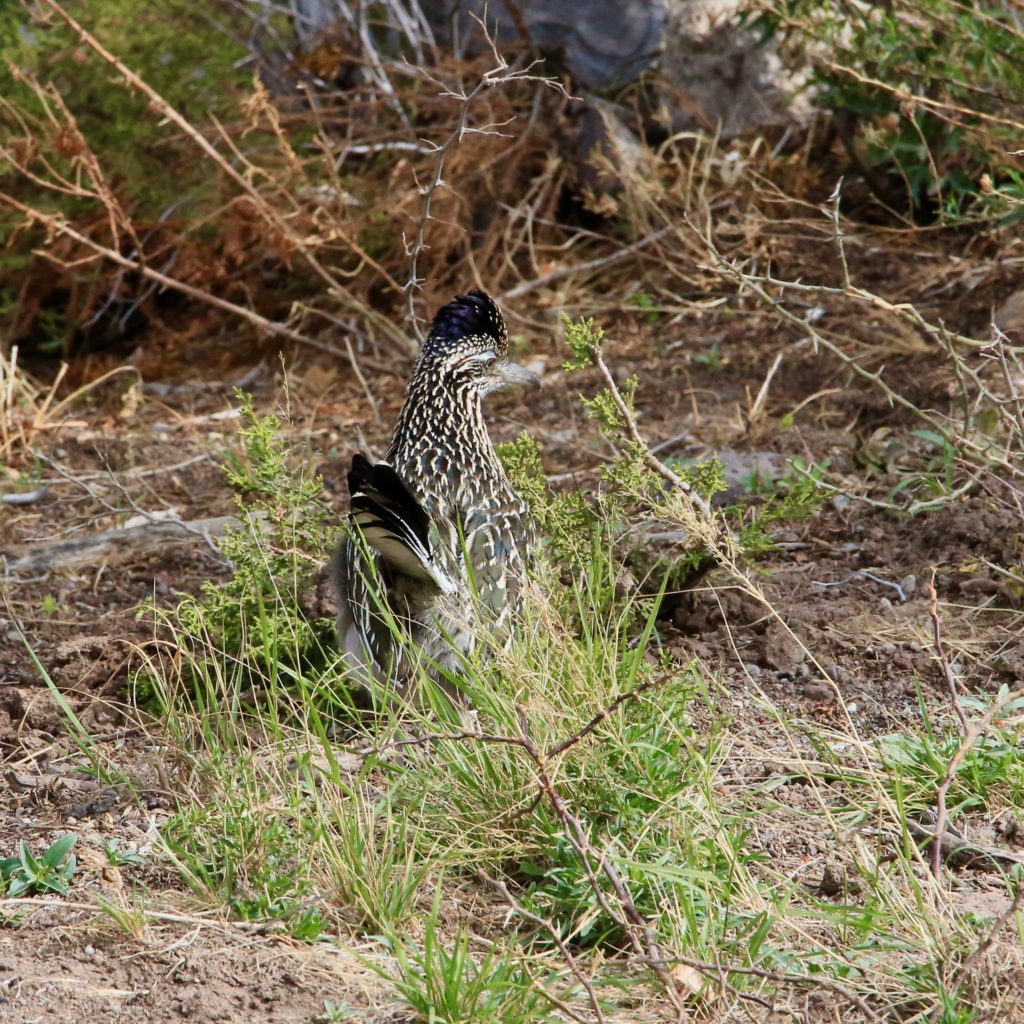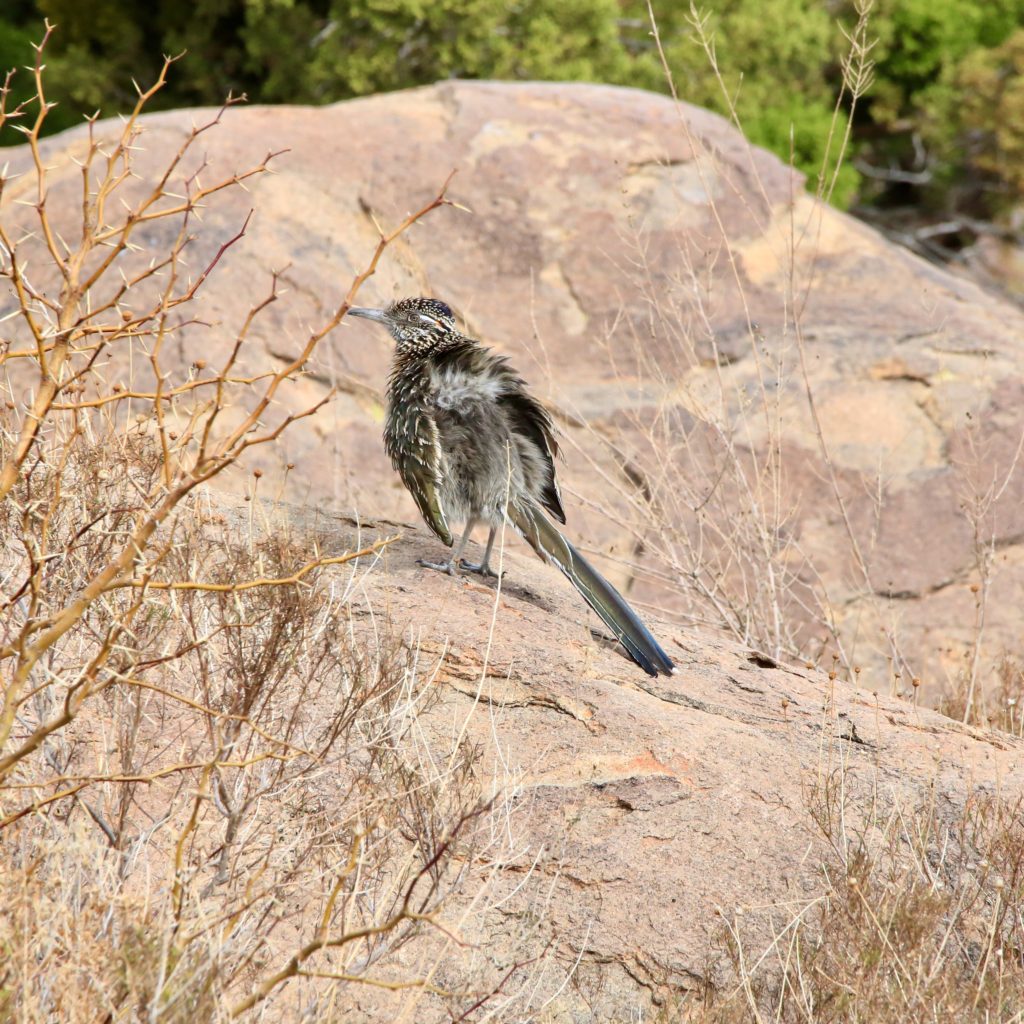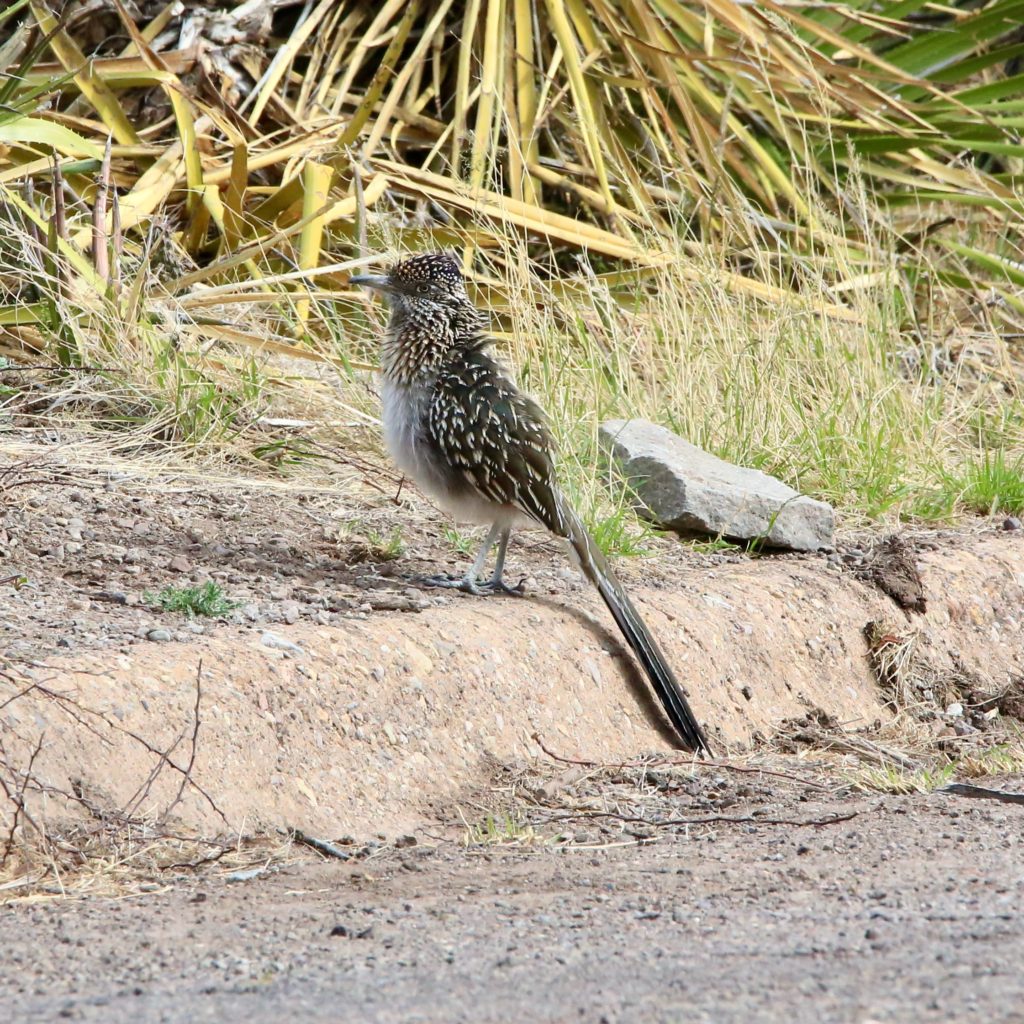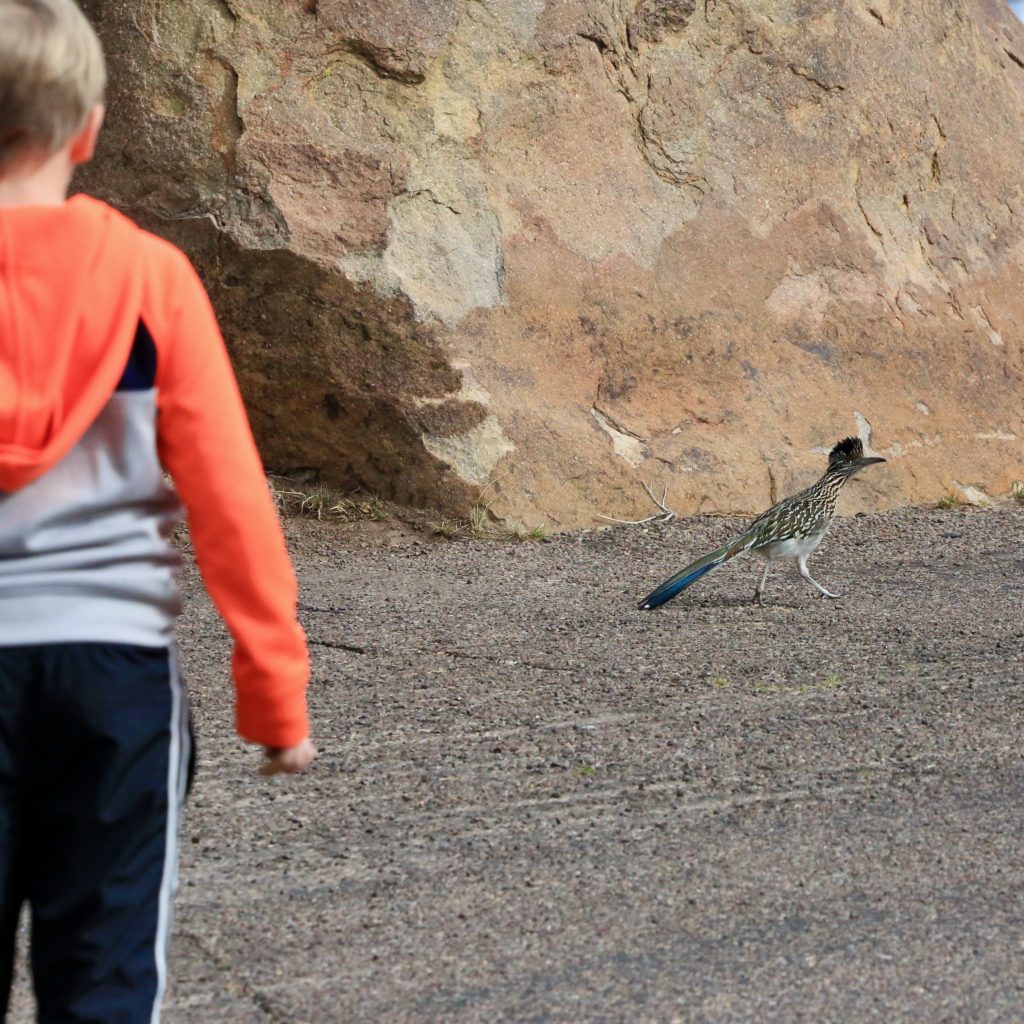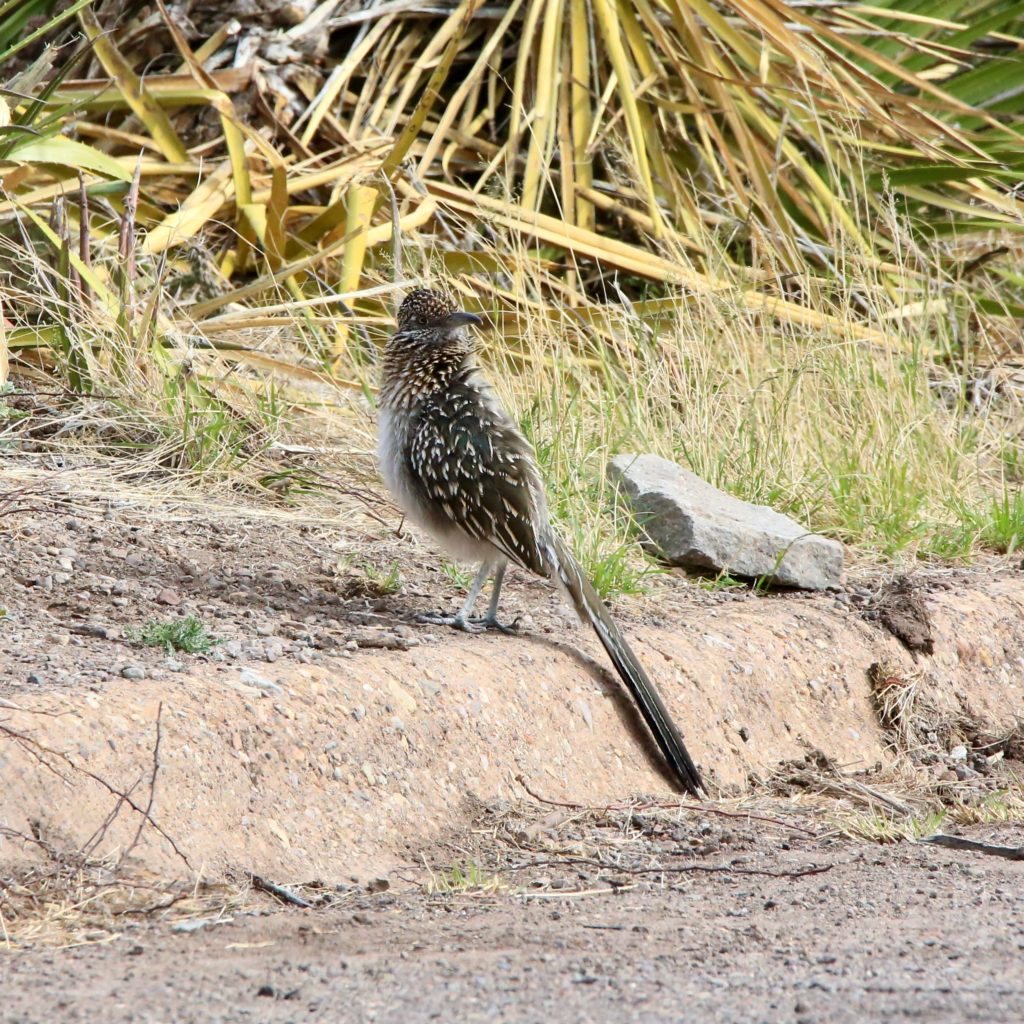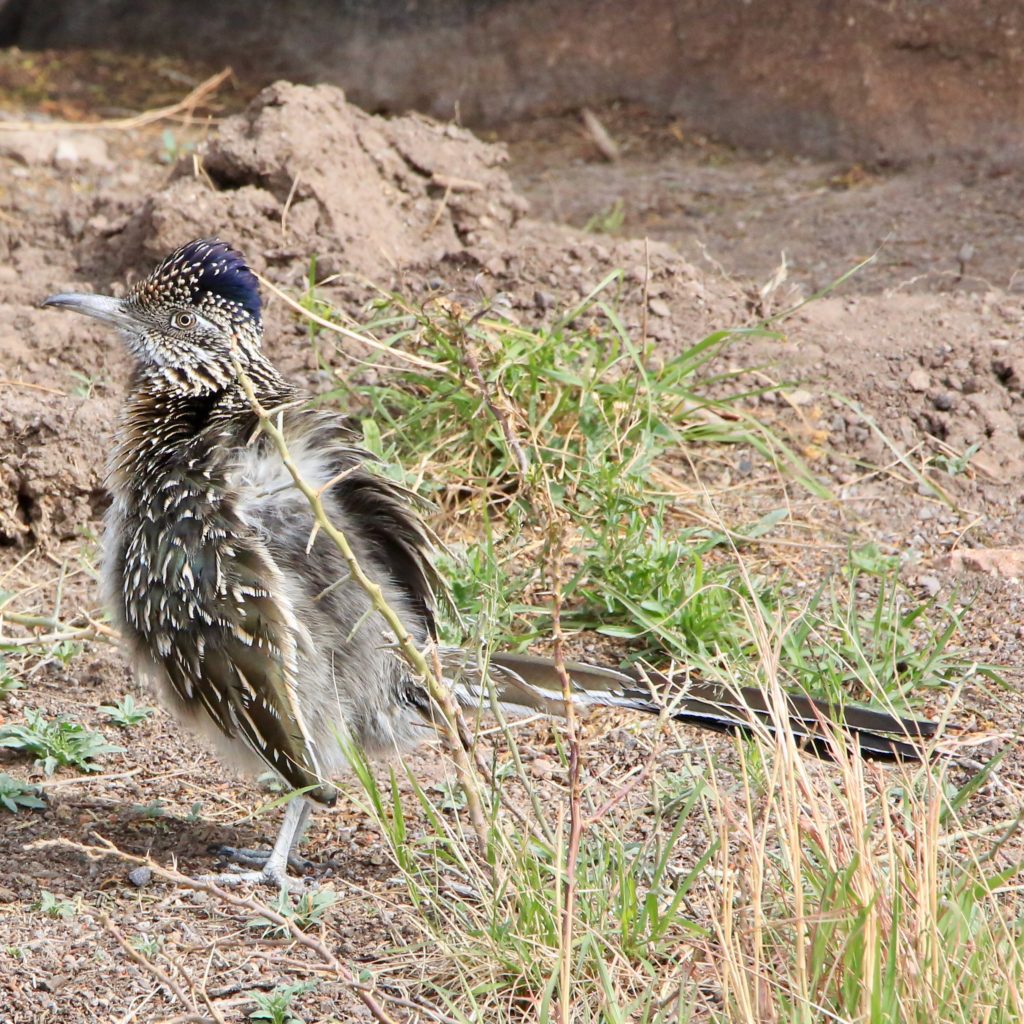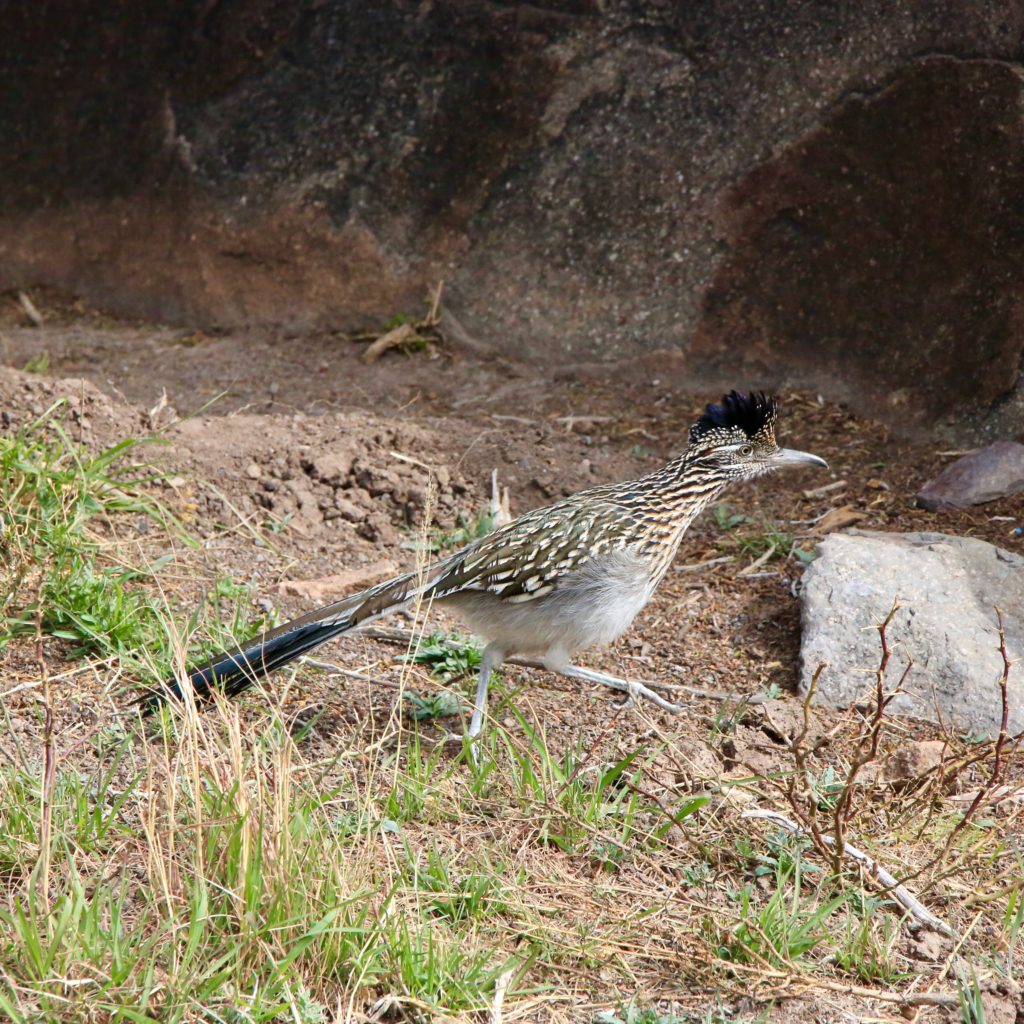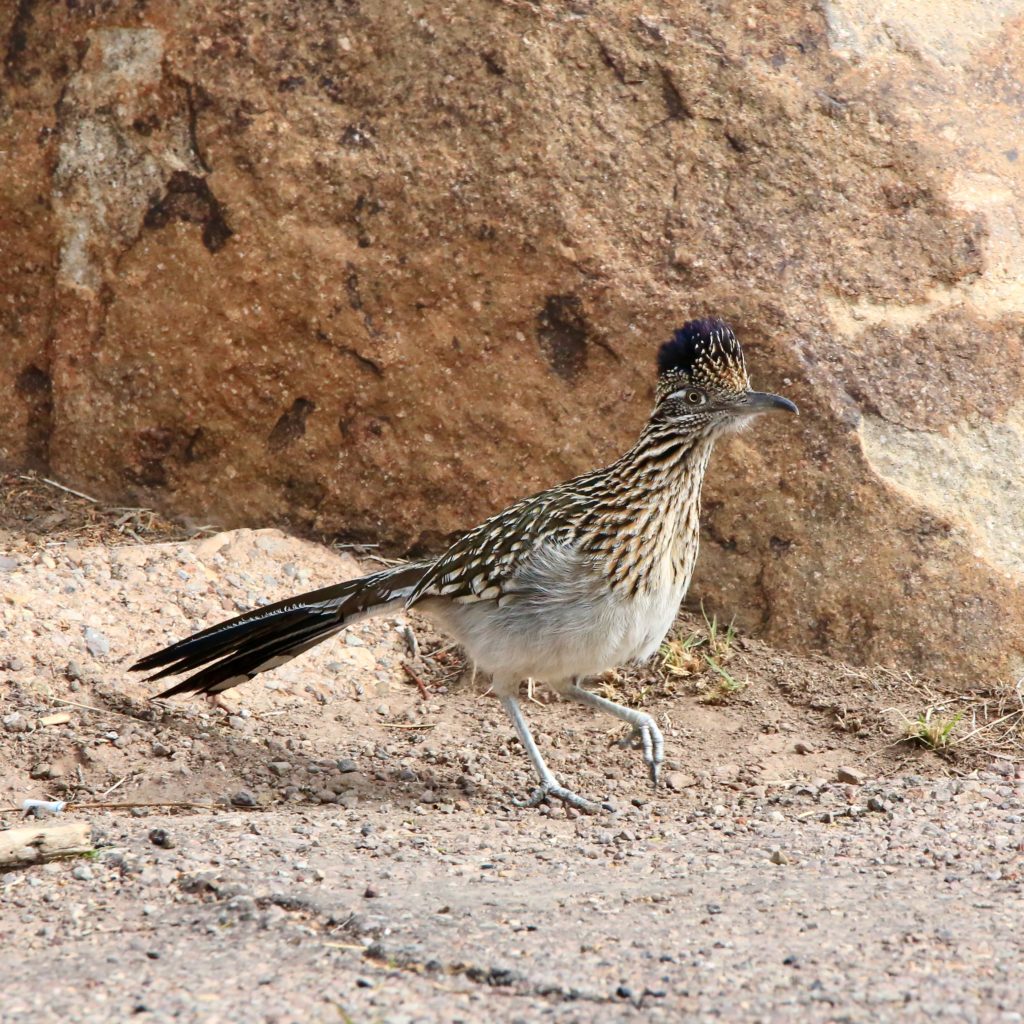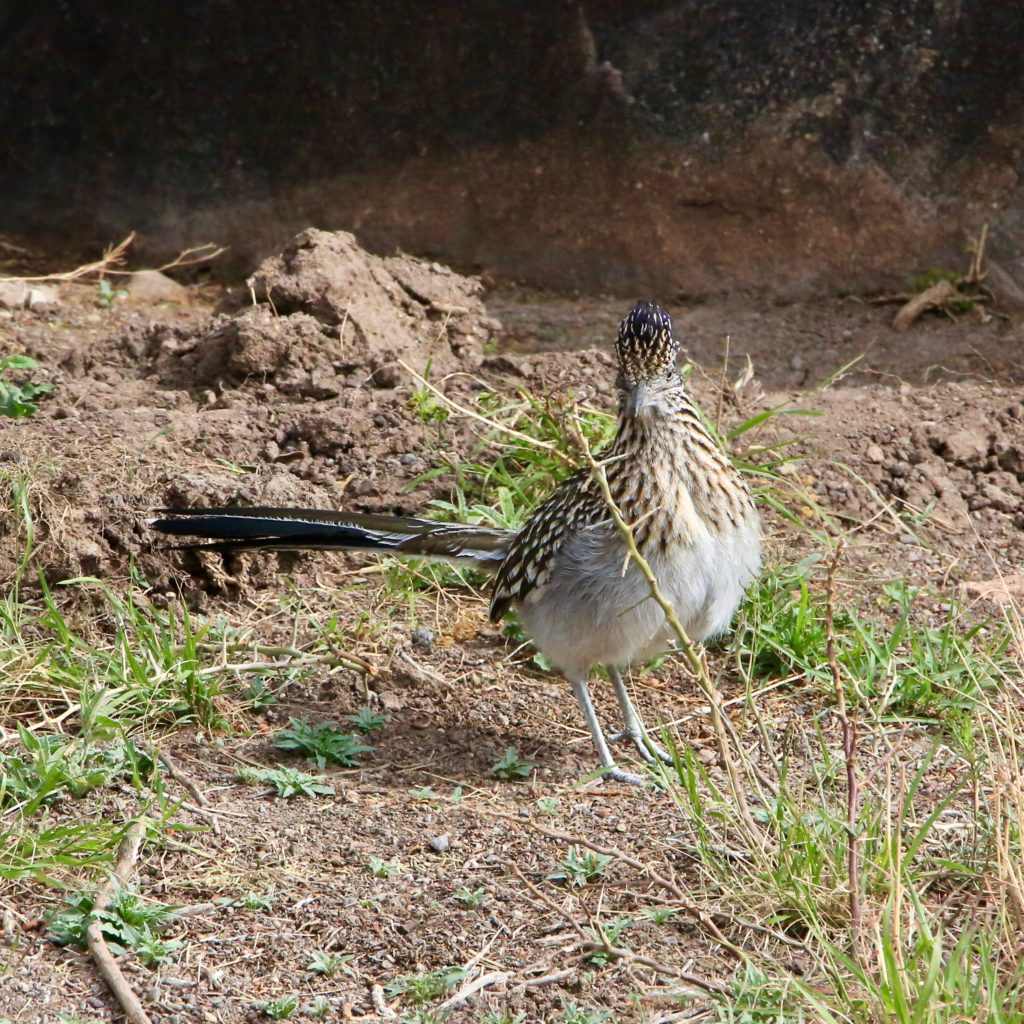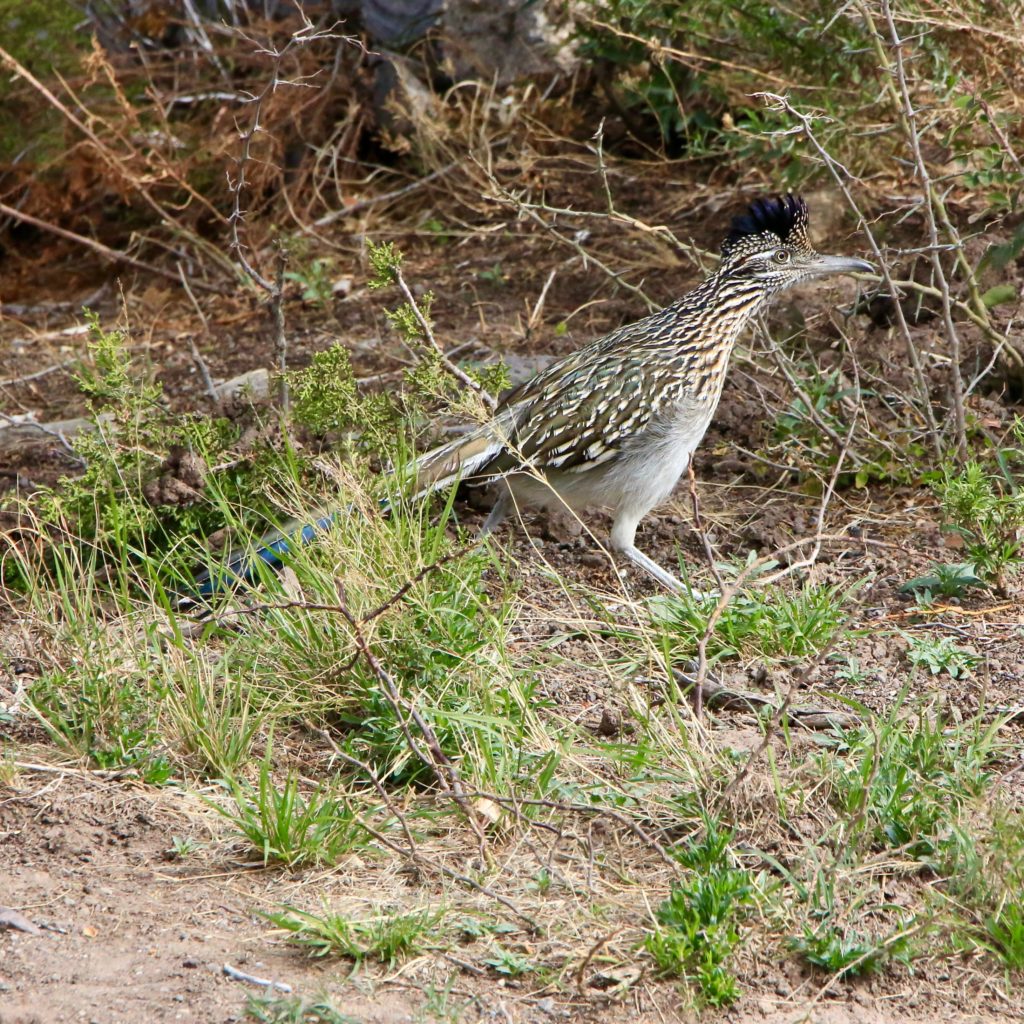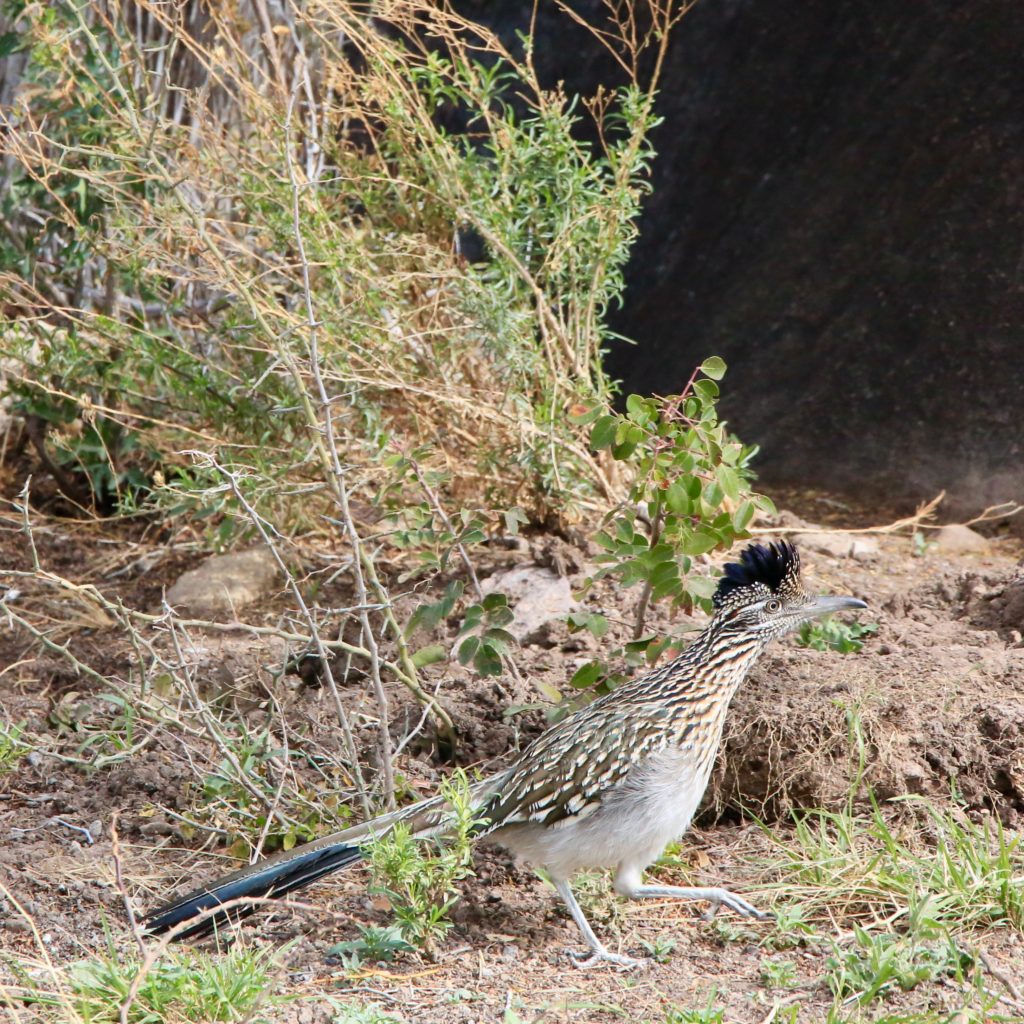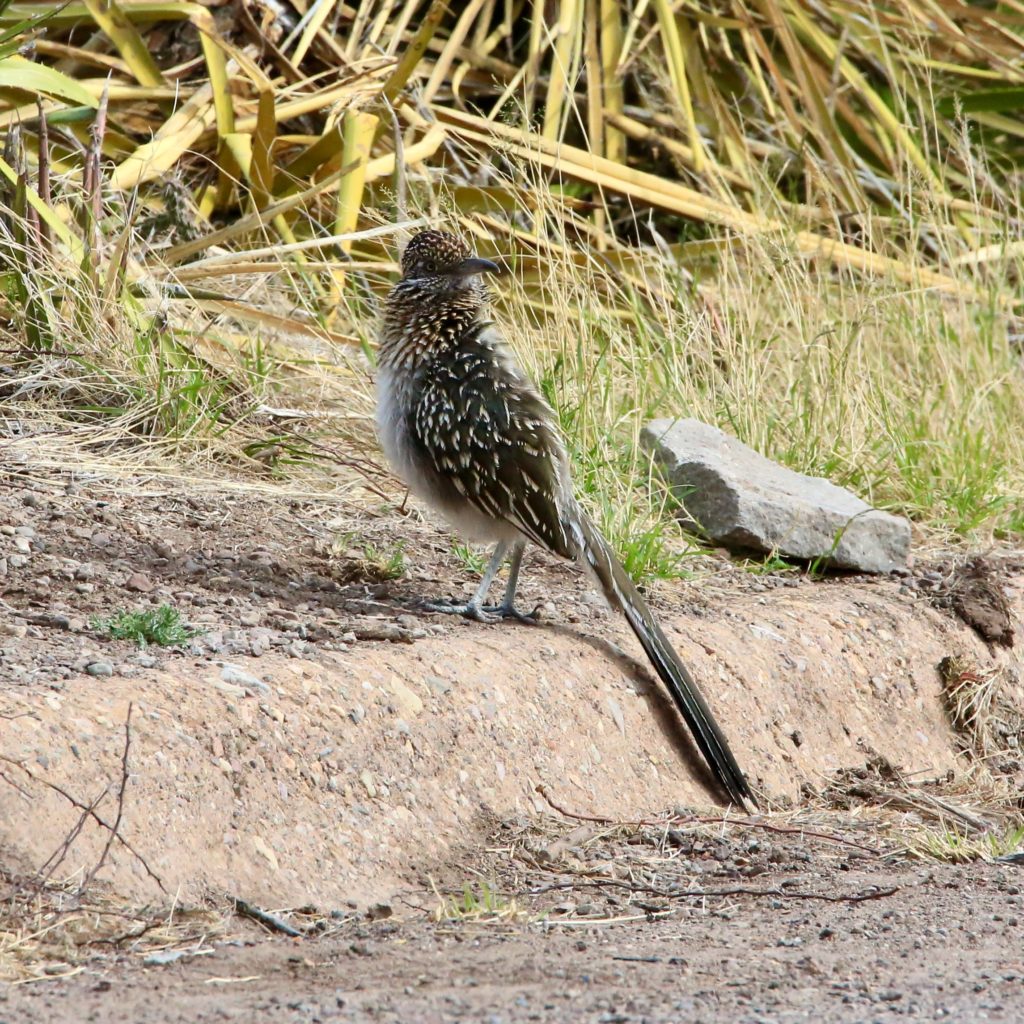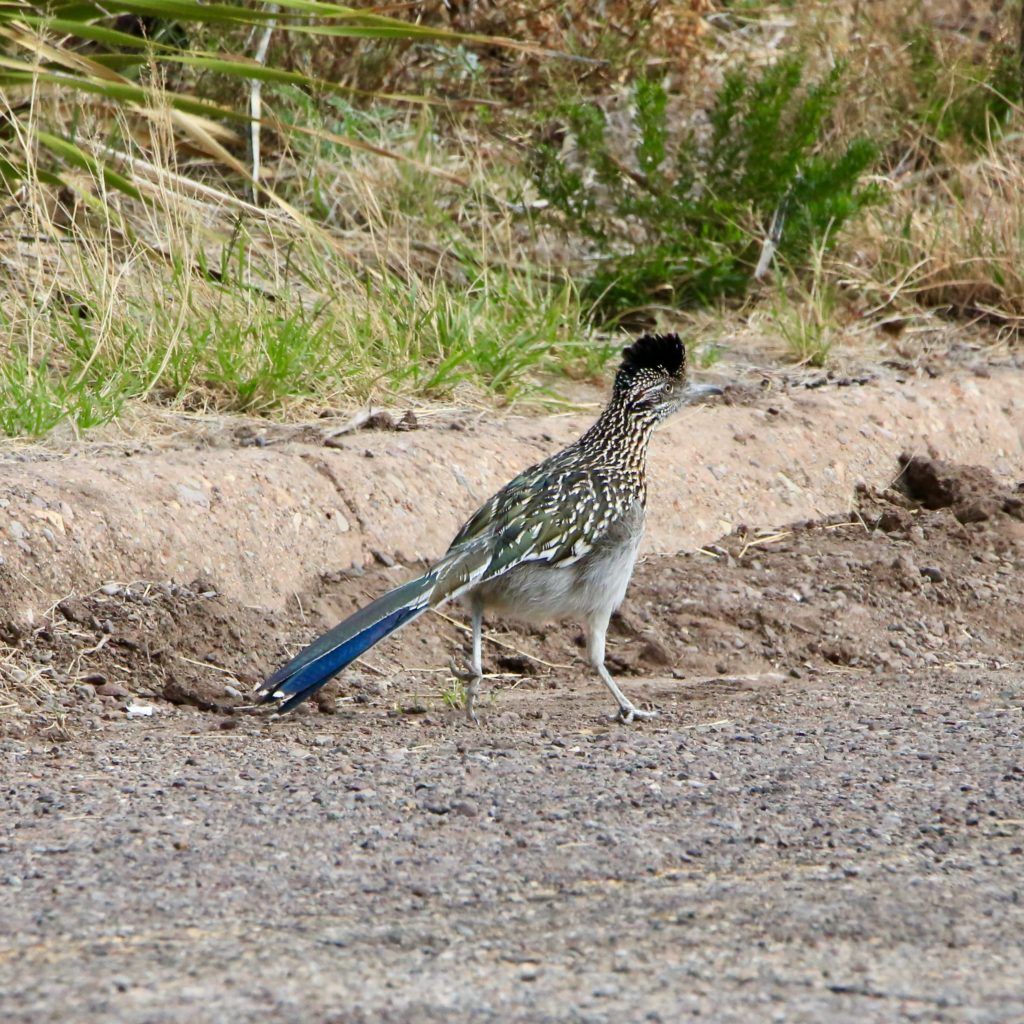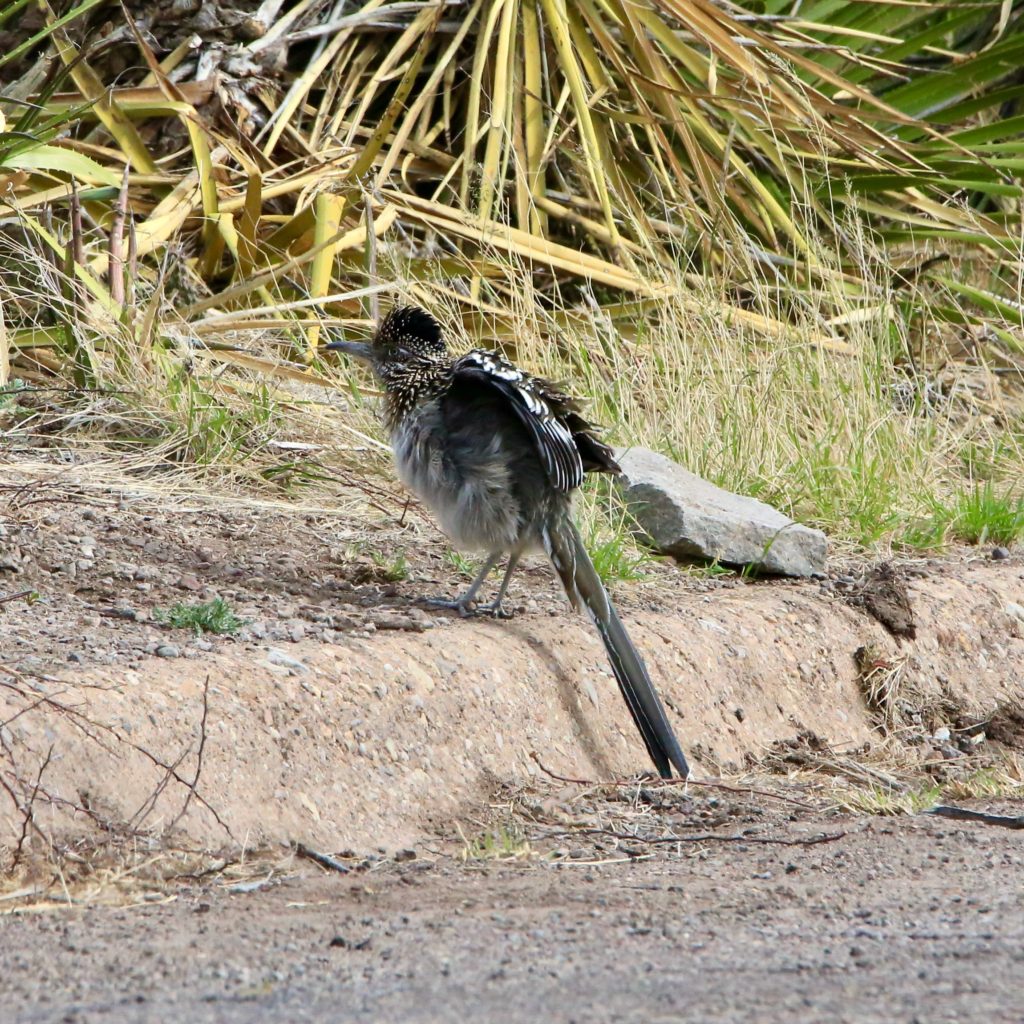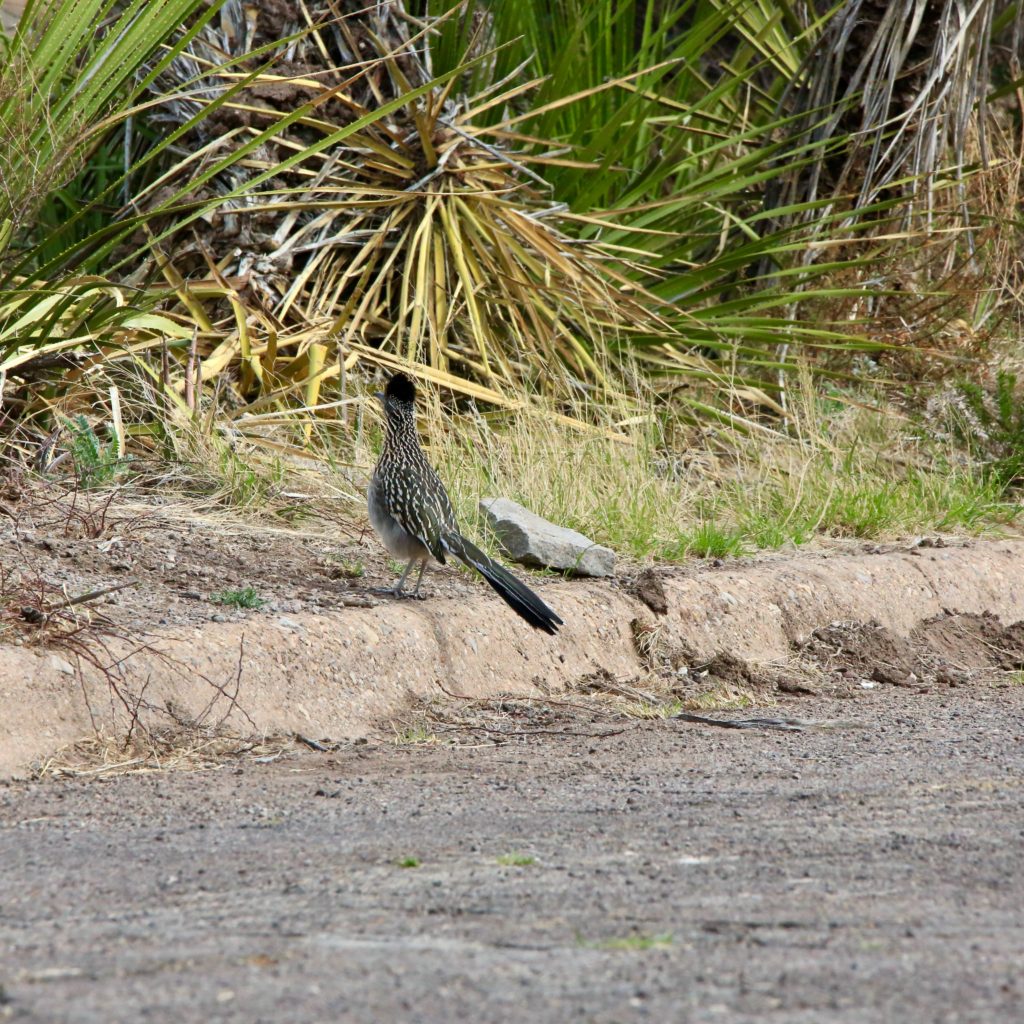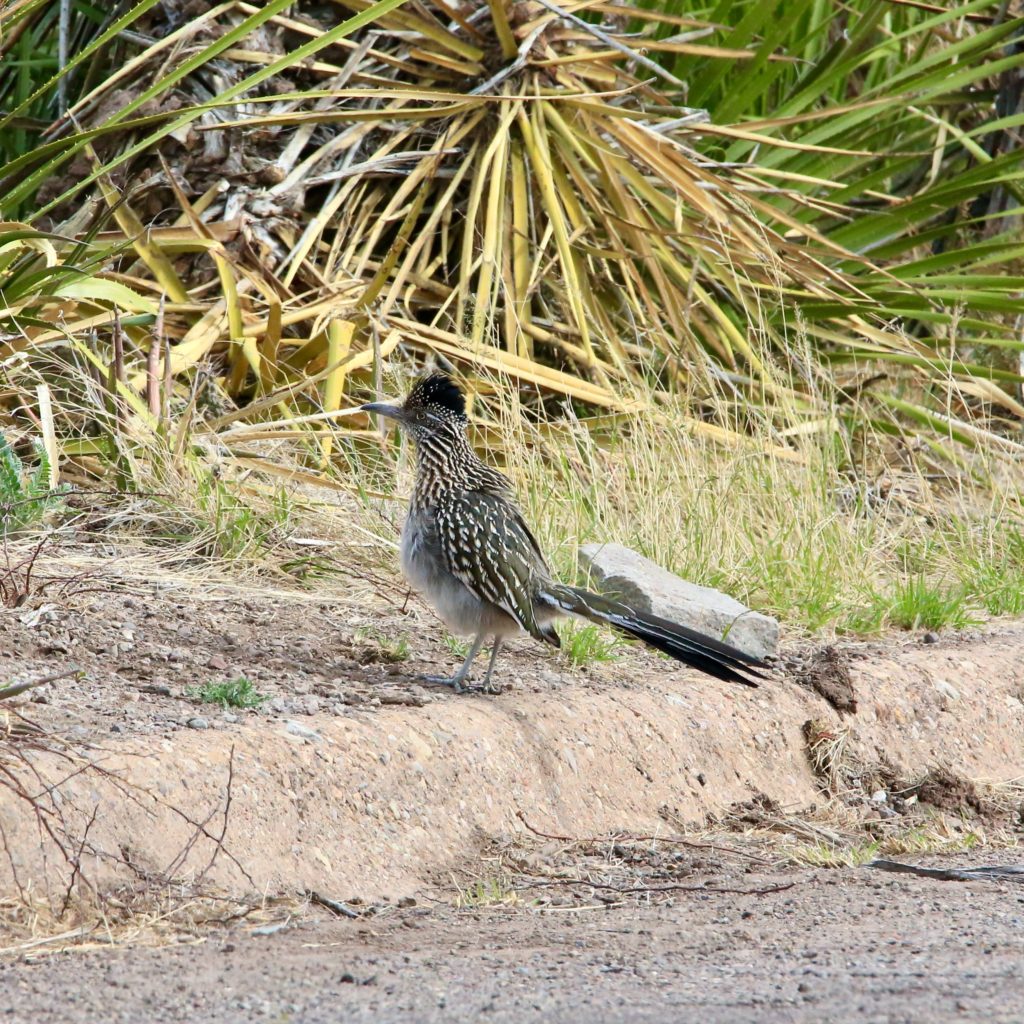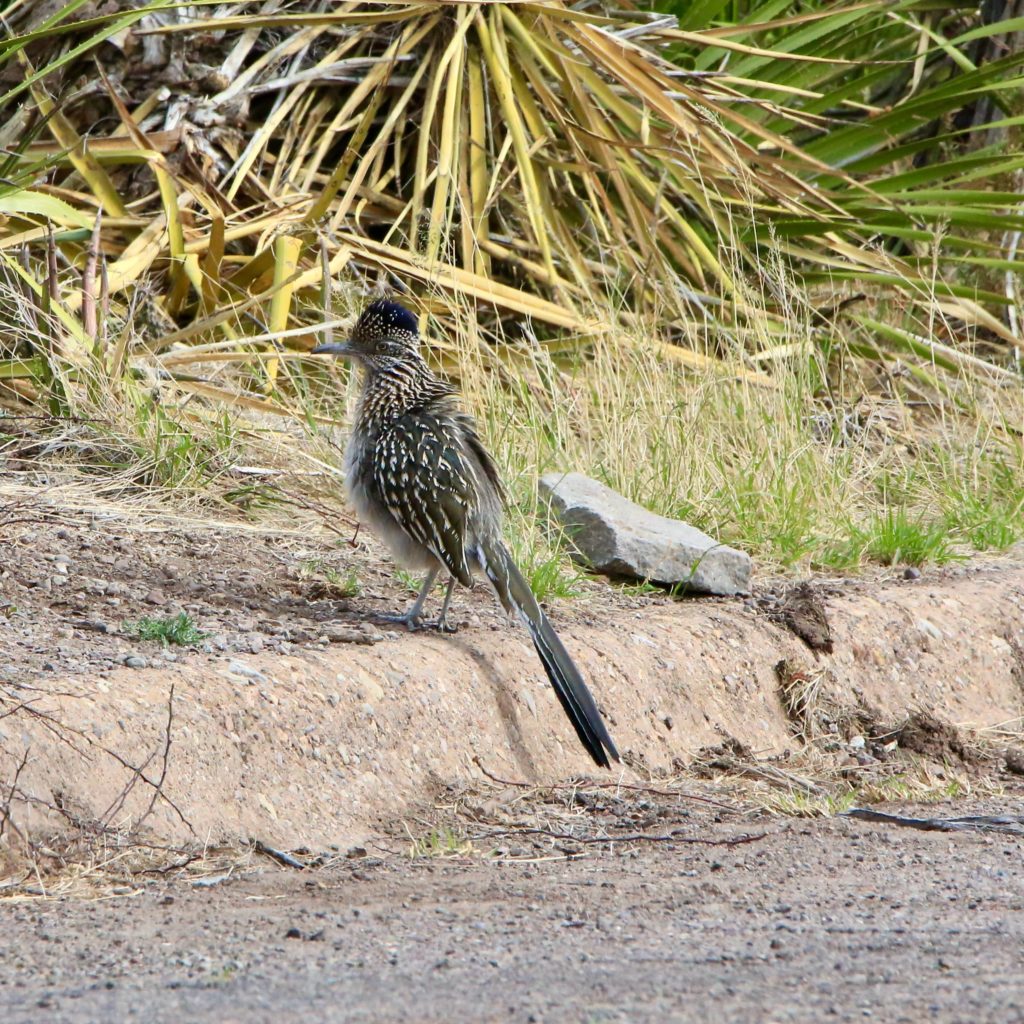
Greater Roadrunner
A Greater Roadrunner is a fun bird to see while bird watching. Below are some tips to help you identify Greater Roadrunners. We have also put together a list of fun Greater Roadrunner t-shirts, Greater Roadrunner bird patches, bird houses, bird feeders, binoculars, stickers and other fun bird watching items.
About Greater Roadrunners
The Greater Roadrunner is native to North America and suggested by its name, the bird was born to run. It can outrun a human so good lock with birdwatching. The Greater Roadrunner is also fierce as it could kill a rattlesnake. The two main types of Road Runners are the Greater Road Runner and the Lesser Road Runner both found in Mexico and America. They are fairly large birds that like desert conditions.
Greater Roadrunner Color Pattern
The bird is black-brown on their upper side and a lighter brown on their underside. It has a white tail tip and a distinctive bushy blue-black crest. The Greater Roadrunner also has a mottled plumage that helps it to blend well with the dusty shrubs of the desert
Description and Identification
Why fly when you can run like the wind? The Greater Roadrunner is the stuff of legend in cartoons, and, in reality, it can run 15 miles an hour, and likely faster when it’s after prey. It’s easy to spot with its long tail and distinguishing crest. They are two feet in length from their bills to their tails, which sport a white top. Their crests are full and blue-black in color. They are camouflaged well with their mottled feathers that help them to blend into their desert surroundings. Greater Roadrunners also have an X-shaped footprint, which is unique in that it has two toes pointing forward and two backward. It is a sacred symbol among the Pueblo people to fend off evil as the X-shape helps cover which way the bird is going, making it hard for bad spirits to follow.
Greater Roadrunner Size
The Greater Roadrunner is a large bird. From beak to tail, it ranges from 56-61cm with a wingspan of 43-61cm and a body mass of 230-430g depending on the age of the bird. The Lesser Road Runner is slightly smaller in size.
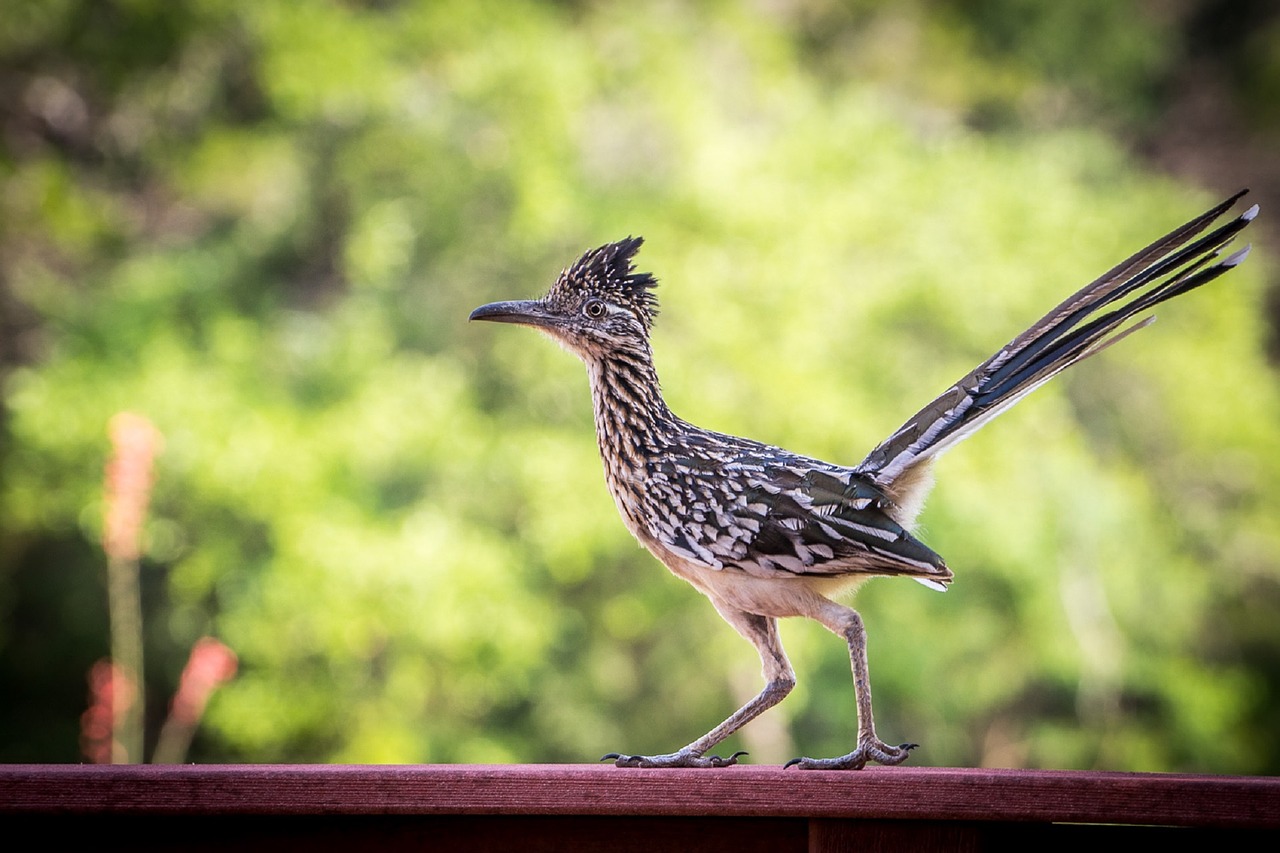
Greater Roadrunner Behavior
Both the Greater and Lesser Road Runners are ground birds. They can run up to speeds reaching 32km per hour. They generally live alone or in pairs and quite interestingly, are monogamous. This means that once they get their mates during courtship, they remain life partners. The male has a unique courtship display which involves bowing, lifting and dropping its wings alternately and then spreading his tail. The male may sometimes bring food offering for the female while courting.
What Greater Roadrunner Eat
What do Greater Roadrunners eat? The short answer is meat. They will eat nearly anything that doesn’t eat them first, like small mammals, toads, frogs, reptiles, centipedes, scorpions, insects, and other birds. They also are scavengers that eat carrion and bird eggs/chicks. They will take large prey, like lizards or rodents, and hit them on the ground or against a rock to make the victim more comfortable to swallow in an elongated form with broken bones. They do eat fruit, seeds, and other material about ten percent of the time in the winter. Watch out in your backyard for them if you live in their range and have a bird feeder out in your yard. They may snatch birds that come to eat from the feeder.
They are considered opportunistic omnivores. They feed on insects, reptiles, rodents, and other small mammals. They may also eat eggs belonging to other types of birds as well as seeds and fruits from the prickly pear cactus.
Where Greater Roadrunners Live and Habitat
Greater Roadrunners live even into northern California in somewhat open areas. They love scrubby areas, and you can find them from below sea level up to nearly 10,000 feet. They live in areas with a lot of creosote, chaparral, tamarisk, and mesquite. They also live in grasslands, riparian woodlands, and canyons. When you find them up higher, they’ll be in pinyon-juniper woodlands and cholla grasslands. They live in red juniper regions, scrubby woods, loblolly pine forests, and upland hardwood stands in their expanded range into Missouri, Arkansas, Louisiana, and eastern Oklahoma. They don’t like heavily forested areas, and you may find them in some farmland or suburban areas.
You will find the Greater Roadrunner in deserts, arid lowlands or mountainous shrublands. Such habitats can be found in southwest North America, Central America, and Mexico.
Range and Migration

Although the Greater Roadrunner’s range is typically in the southwestern part of North America, it is also moving its way east into places like Missouri and Arkansas. When you’re on the hunt to spot a Greater Roadrunner, go to empty country roads where the land is open. You’ll typically find them in arid grasslands and low deserts. They may surprise you if they may run across the road or out from some shrub that protected them. They like to come to the edge of the road because that’s where they can find prey, like snakes or lizards. They also like to eat mice and other birds that go to seed-bearing plants to eat in open areas.
Greater Roadrunner Lifecycle
The female can lay up to 6 eggs. It takes 18-20 days for incubation before the eggs hatch. The hatchlings leave the nest at 2-3 weeks old and begin foraging with their parents. They have a lifespan of 7-8 years.
Nesting
Roadrunner pairs select a site about three to 10 or more feet high off the ground for their nests. It might be in a strong bush, small tree, or in a cactus. Their nests are in the shade and well-hidden, and they are often next to paths or streambeds they utilize when they carry items to build the nest and to feed their young. Females make twigs males bring into a small nest about four inches deep. The nest may be over 17 inches in width and 8 inches tall. It could be lined with leaves, sticks, grass, feathers, snakeskin, and cattle and horse manure. The pair sometimes continue to build the nest as the eggs incubate, and the chicks grow. They also sometimes reuse a nest they constructed the year before.
Ornithology
Bird Watching Academy & Camp Subscription Boxes
At Bird Watching Academy & Camp we help kids, youth, and adults get excited and involved in bird watching. We have several monthly subscription boxes that you can subscribe to. Our monthly subscription boxes help kids, youth, and adults learn about birds, bird watching, and bird conservation.
Bird Watching Binoculars for Identifying Greater Roadrunners
The most common types of bird watching binoculars for viewing Greater Roadrunners are 8×21 binoculars and 10×42 binoculars. Bird Watching Academy & Camp sells really nice 8×21 binoculars and 10×42 binoculars. You can view and purchase them here.
Greater Roadrunner T-shirts
If you love the Greater Roadrunner you should purchase a Bird Watching Academy & Camp T-shirt. To help support bird conservation we donate 10 percent to bird conservation activities.
Greater Roadrunner Iron On Patches
Kids, Youth, and Adults love to collect our Bird Watching Academy & Camp iron on patches. Our bird watching patches help you keep track of the birds you have seen an identified. You can also display the patches on our Bird Watching Academy & Camp banners.
The Greater Roadrunner is a great iron on patch to start your collection with. The patches are durable and can be sewn on or ironed on to just about anything.
Greater Roadrunner Stickers
Stickers are a great way for you to display your love for bird watching and the Greater Roadrunner. We sell a monthly subscription sticker pack. The sticker packs have 12 bird stickers. These sticker packs will help your kids learn new birds every month.
Bird Feeders For Greater Roadrunner
There are many types of bird feeders. Here are our favorite bird feeders for your backyard. We use all of these bird feeders currently. Kids will have a great time watching birds eat at these bird feeders. Using this collection of bird feeders will provide a wide variety and many types of birds.
Best Bird Houses for Greater Roadrunner
There are many types of bird houses. Building a bird house is always fun but can be frustrating. These 4 bird houses have become our favorites. Getting a bird house for kids to watch birds grow is always fun. We spent a little extra money on these bird houses but they have been worth the higher price and look great.


